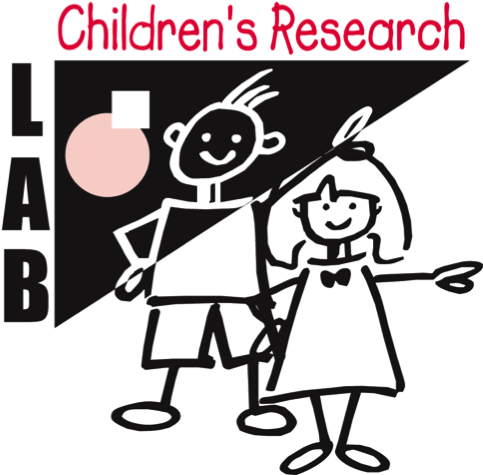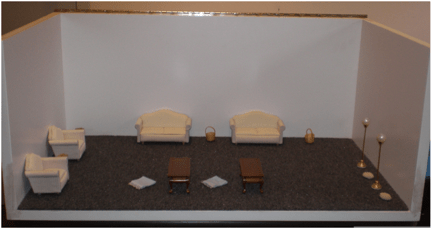Children’s Research Laboratory
We are part of the Children’s Research Laboratory. You can learn more about our research here: https://psychology.illinoisstate.edu/research/childrensResearchLab/
Families interested in research participation can complete our secure online form here: https://forms.illinoisstate.edu/forms/psychildrens_research
Researchers interested in learning more about our policies and procedures can learn more here: https://psychology.illinoisstate.edu/research/childrensResearchLab/childResearchParticPool/
Executive Functioning During Early and Middle Childhood
One of my research interests is cognitive flexibility, which is an aspect of executive functioning. Flexibility enables people to respond in different ways when faced with differing situations or goals. Our early work focused on whether children and adults can flexibly organize locations into groups. These projects involved assessments such as picture sorting tasks or a modified version of the dimensional change card-sorting task developed in our laboratory, in addition to our location memory paradigm (Hund & Plumert, 2005; Hund & Foster, 2008). Since then, our work has expanded to include other aspects of executive functioning and its relation to school readiness, academic success, theory of mind, and emotional understanding. For instance, we specified the development of flexibility during middle childhood and its relation to theory of mind (Bock, Gallaway, & Hund, 2005). We also demonstrated that sustained attention predicts inhibition and spatial working memory during the preschool years, implicating attention as a key factor for assessment and intervention (Reck & Hund, 2011). Another project probed the development of executive functioning and its links to academic skills and social understanding during the elementary years (Cantin et al., 2016). We also tested the importance of parent-child interactions and executive functioning for predicting school readiness (Mann et al., 2017); the relations between executive functioning, reading strategies, and reading comprehension (Gnaedinger, Hund, & Hesson-McInnis, 2016); and executive functioning among preschool children at risk for difficulties at school entry.
Spatial Language, Memory, and Scaling During Early Childhood
Another research interest is the development of spatial language during the preschool years. Our first project demonstrated that 3- and 4-year-old children use relative distance to determine nearbyness, but systematicity increases across early childhood (Hund & Plumert, 2007). Next, we demonstrated that both language and memory for locations depend on relative distance, though again, systematicity increased across early childhood (Hund & Naroleski, 2008; Hund, 2010). Additional research focused on more challenging spatial concepts, such as between and middle, which have received very little research attention. We demonstrated that directive prompting via scaffolding was most effective in eliciting complex spatial terms, though overhearing also was effective (Foster & Hund, 2012; Hund et al., 2017). We also developed parent and child measures of language comprehension and production that will move the field forward given the paucity of instruments currently available. Ongoing research focuses on spatial scaling (Plumert, Hund, & Recker, 2019), as well as understanding the development of ordinal, cardinal, and spatial concepts during early childhood. This work coincides with increasing focus on the role of spatial language in supporting early success in mathematics.
The Dynamics of Skillful Wayfinding and Direction Giving
A third research interest is understanding the dynamics of wayfinding processes, particularly how people give and follow directions to get from place to place. Our first project demonstrated that wayfinding strategies are related to wayfinding efficiency (Hund & Minarik, 2006). Next, we found that the cues provided in wayfinding directions depend on the needs of the listener (Hund, Haney, & Seanor, 2008). Interestingly, our international collaborative research demonstrated that Dutch participants used survey cues much less frequently than did U.S. participants (Hund, Schmettow, & Noordzij, 2012). We also found that sense of direction and training experience are powerful predictors of wayfinding efficiency (Hund & Nazarczuk, 2009). In recent years, we have focused on indoor wayfinding, extending previous results involving outdoor spaces and scale models. Our work has revealed strong preferences for route cues such as landmarks and left-right turns when giving and following wayfinding directions (Hund & Padgitt, 2010; Padgitt & Hund, 2012). A most recent project showed that preferences for route cues interact with wayfinding task demands (Hund & Gill, 2014). Ongoing and future work focuses on the role of working memory in wayfinding in indoor and outdoor environments (Hund, 2016). We hope that this work can be used to design effective wayfinding training programs and computerized navigation systems.
The Development of Location Memory
Remembering locations is a fundamental aspect of human functioning. Even simple tasks, such as getting to work or preparing a snack, would be difficult without the ability to remember location information. To remember the vast number of locations in the environment, children and adults need some way to organize spatial details. My research focuses on how children and adults use visible boundaries, spatiotemporal experience, semantic categories, and other cues to organize locations into groups. The goal of my research is to understand how children and adults use particular cues to form spatial categories in specific task contexts to facilitate memory for locations (Plumert & Hund, 2001; Hund & Plumert, 2002). Our early work demonstrated that 7- to 11-year-old children and adults exhibit remarkable stability in spatial organization based on spatiotemporal cues and object cues (Hund & Plumert, 2003, 2005; Hund, Plumert, & Benney, 2002; ). Nonetheless, flexibility increases across development. One extension demonstrated unique signatures of organization for children and adults as spatial groupings emerge over time (Recker et al., 2007). Another extension demonstrated that boys with ADHD exhibited more substantial spatial memory errors during learning that did symptom-free age-mates (Reck, Hund, & Landau, 2010). In addition, we found social competence deficits in boys with ADHD (Ronk, Hund, & Landau, 2011). Our recent research in this area has been integrated within studies focusing on executive functioning.
Geographic Information Systems (GIS) Improves Spatial Thinking and STEM Success
Recent collaborative research focuses on the relation between spatial skills, problem solving, and success in science, technology, engineering, and mathematics (STEM). In particular, our NSF funding supported the development of curriculum that uses Geographic Information Systems (GIS) to improve elementary students’ thinking skills. Most work with GIS involves high school and college students, but our contention is that implementation during the elementary years will be particularly powerful. As expected, we found that elementary students who completed our GIS curriculum showed larger improvements in spatial thinking and geography knowledge than did students completing traditional social studies lessons (Jadallah et al., 2017). We also found differences in the nature of classroom discourse based on technology integration (Jadallah et al., 2019). This work has exciting basic and applied implications for improving spatial thinking, problem solving, and STEM success.




